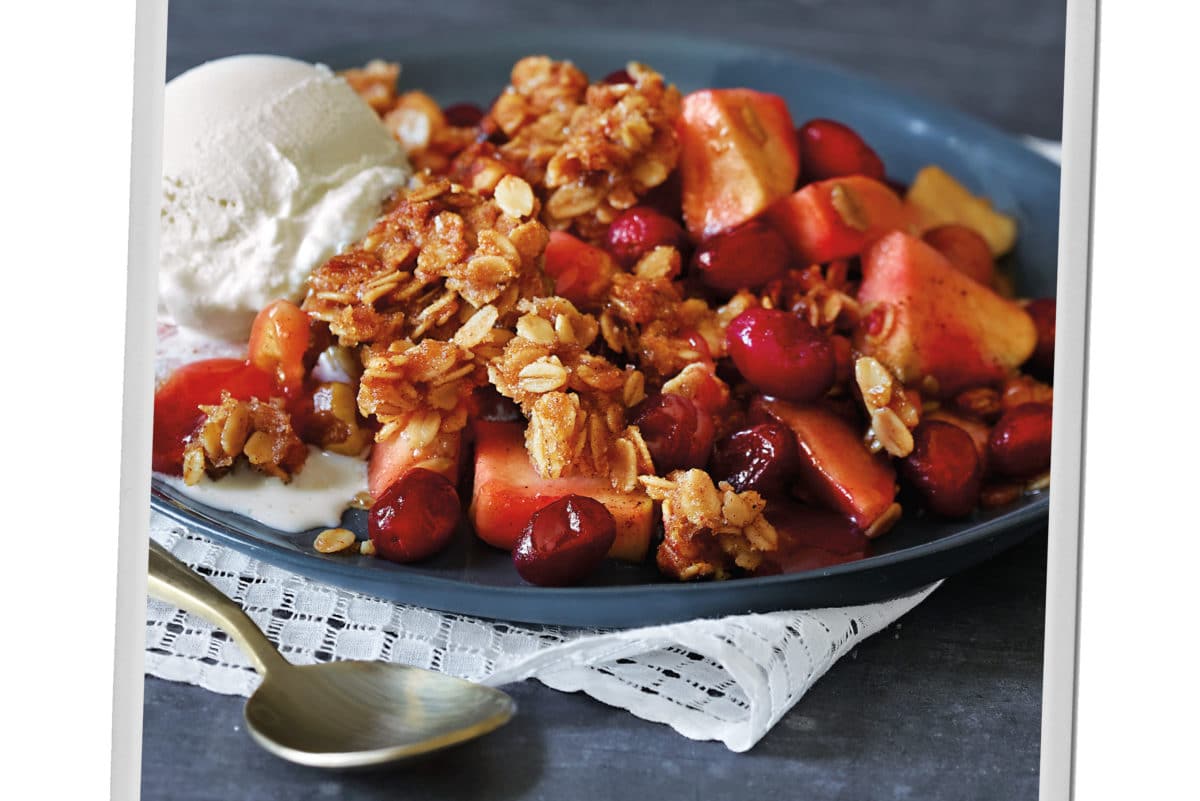For the first two years after I gave up gluten, I didn’t touch bread, muffins, cookies or pastries because most of the prepared gluten-free goodies are coarse, dry and lacking in good flavor. The flour blends that are available in stores aren’t appealing because they are mixtures of nutritionally empty white starches — items like cornstarch, tapioca flour, potato starch and white rice flour. So I served puddings, meringues, and fruit and ice cream desserts and was content — for a while.
Then I began craving baked goodies and decided it was time to explore naturally gluten-free grains — sorghum, buckwheat, flaxseed, quinoa, and millet. These were products I’d been avoiding because I knew little about baking with them, so they seemed complicated. But I wanted to create treats with great flavor and texture, and these healthful grains, mixed with only a small measure of white starches, were the key. After a year playing around with them in my kitchen, I was so thrilled with the results of my experimentation I wrote my latest book, Gluten-Free Baking.
Oats and oat flour quickly became favorites. These subtly sweet products add depth of flavor, tenderness, and moisture to baked goods, and are loaded with health benefits, too.
A traditional breakfast food, oats are a natural for morning pastries. I use them to add cozy flavor and appealing tenderness to muffins. I learned that a combination of rolled oats and oat flour could make up the bulk of the dry ingredients in batters, so that it is unnecessary to add any refined white starches. Mixed with nuts, sugar, and butter, oats also become a wonderfully crunchy topping for muffins and coffeecakes. Raspberry oatmeal muffins are a perfect example of a great breakfast pastry, and are also a terrific goodie to nibble on while opening holiday gifts.
I’ve always liked to keep a tin of cookies on hand for snacks and treats, and oatmeal cookies have long been a favorite. For gluten-free oatmeal cookies with old-fashioned flavor, I simply add sorghum flour and oat flour to rolled oats, and then just a little tapioca flour to help hold everything together. Lace cookies are more elegant morsels. Rolled oats and almonds make up almost all the dry ingredients in these delicate pastries, with just one tablespoon of tapioca flour for structure.
Fruit crumbles are easy to make without gluten, especially if you have a bag of rolled oats on hand. Mixed with sugar, butter, nuts, and a little sorghum flour, they are transformed into a sweet, crunchy toping perfect for apples and cranberries, pears, peaches, or berries.
When it came to breads, I didn’t want to create disappointing copies of loaves that rely on gluten for their texture. I discovered that I could make great Irish soda breads with subtly-sweet oatmeal flour, oat bran, and wheat-like sorghum flour, and they have become my everyday bread — great hot, toasted or plain, slathered with butter and jam or smeared with soft cheese. The oats not only give the bread flavor, they also keep it from drying out, a problem with many gluten-free loaves.
Oats are readily available. However, for the gluten-intolerant it is essential to use only oats that are labeled gluten-free. Oats can be tainted by cross contamination with grains that do contain gluten — predominantly wheat, rye, and barley. This can happen in a few ways. Oats are often planted in fields where wheat, rye, or barley once grew; any unharvested seeds fall into the earth and, when the soil is watered, sprout right along with the oats. At harvest, these gluten-containing grains are gathered with the oats. A similar risk occurs when oats are planted close to wheat, rye, or barley fields and winds blow errant seeds into the oat field. Newly harvested oats can be transported in containers that previously held grains that are troublesome to the gluten-intolerant, or they can be milled on the same equipment. Fortunately, gluten-free oats are easy to find, but it is important to read the labels of any oat products.
A few tips for baking with gluten-free oats and oat flour:
• Use only oat products labeled as gluten-free.
• Store gluten-free products in a separate cupboard from gluten-containing grains to avoid cross contamination.
• Gluten-free baking requires more ingredients than standard baking. To make it easier to be organized, I place all my gluten-free baking ingredients in a basket, and bring out the basket when I start baking. That way I don’t have to search for everything.
• Oat flour is a superior-tasting, medium weight grain. It is interchangeable with sorghum flour and brown rice flour.
• Some very sensitive people can’t handle even gluten-free oats. In that case, substitute sorghum flour or brown rice flour for oat flour. ![]()
First published December 2014
